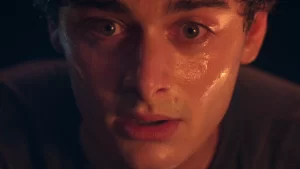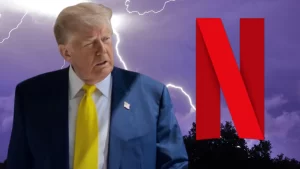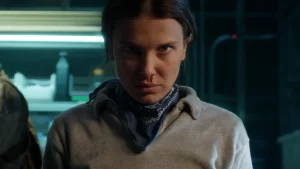Netflix has announced the cast and creative team for the live-action Avatar: The Last Airbender series in development at the streaming network.
Gordon Cormier is playing Aang (12), a fearless and fun-loving twelve-year-old who just happens to be the Avatar, master of all four elements and the keeper of balance and peace in the world. An airbending prodigy, Aang is a reluctant hero, struggling to deal with the burden of his duties while still holding on to his adventurous and playful nature.
Iawentiio is playing Katara (14), a determined and hopeful waterbender, the last in her small village. Though only fourteen, she’s already endured great personal tragedy, which has held her back from rising to her true potential, though it’s never dimmed her warm and caring spirit.
Ian Ousely is playing Sooka (16), Katara’s sardonic and resourceful 16-year-old brother. Outwardly confident, even brash, he takes his responsibility as the leader of his tribe seriously, despite his inner doubts over his warrior skills… doubts that he masks with his wit and deadpan sense of humor.
Dallas Liu is playing Zuko (17), a skilled firebender and the intense and guarded Crown Prince of the Fire Nation. Currently roaming the world in exile, he’s on an obsessive quest to capture the Avatar because he believes that is the only way to reclaim his life and live up to the demands of his cruel and controlling father, the Fire Lord.
Albert Kim (Sleepy Hollow, Nikita) is the showrunner, executive producer, and writer.
Executive Producers include Dan Lin (The Lego Movie, Aladdin) and Lindsey Liberatore (Walker) for Rideback and Michael Goi (Swamp Thing, American Horror Story), with Roseanne Liang as co-executive producer.
Directors on the series include Michael Goi, Roseanne Liang, and Jabbar Raisani.
The series will be an authentic adaptation of the award-winning and beloved Nickelodeon animated series Avatar: The Last Airbender reimagined as a live-action adventure.
Avatar: The Last Airbender Netflix cast and creative team:
![]()
Albert Kim penned the following via Netflix:
This is all my daughter’s fault. She’s the one who got me hooked.
When ‘Avatar: The Last Airbender’ first aired on Nickelodeon, she wasn’t quite old enough to fully track the narrative. Yet I’d still find her glued to the TV every week, captivated by the adventures of Aang and his friends (who would quickly become ‘her’ friends).
I began watching along with her with the thought of helping her understand what was going on. But my Dad-splainy duties quickly fell by the wayside as I found myself sucked into the world and characters, and soon we were watching side by side, both of us swept away by the singular mix of action, humor, and epic storytelling.
It also wasn’t lost on me that this was a world that drew from Asian cultures and legend, which is a rarity to this day and something I appreciated as an Asian-American father. That my daughter was able to see characters who looked like her on screen was more than just entertaining. It was a gift.
Flash forward 15 years. Netflix offers me the opportunity to develop a live-action remake of Avatar. My first thought was, “Why? What is there I could do or say with the story that wasn’t done or said in the original?” ‘A:TLA’ had only grown in popularity and acclaim over the last decade and a half, which is a testament to how complete and resonant a narrative experience it had been. So if it ain’t broke, why fix it?
But the more I thought about it, the more intrigued I became. VFX technology has advanced to the point where a live-action version can not only faithfully translate what had been done in animation — it can bring a rich new visual dimension to a fantastic world. We’ll be able to see bending in a real and visceral way we’ve never seen before.
Also, Netflix’s format meant we had an opportunity to reimagine a story that had originally been told in self-contained half-hour episodes as an ongoing serialized narrative. That meant story points and emotional arcs we’d loved in the original could be given even more room to breathe and grow.
Finally, a live-action version would establish a new benchmark in representation and bring in a whole new generation of fans. This was a chance to showcase Asian and Indigenous characters as living, breathing people. Not just in a cartoon, but in a world that truly exists, very similar to the one we live in.
I also knew what I didn’t want to do. I didn’t want to change things for the sake of change. I didn’t want to modernize the story, or twist it to fit current trends. Aang is not going to be a gritty antihero. Katara is not going to get curtain bangs. (I was briefly tempted to give Sokka a TikTok account though. Think of the possibilities.)
Don’t get me wrong. We’ll be expanding and growing the world, and there will be surprises for existing fans and those new to the tale. But throughout this process, our byword has been “authenticity.” To the story. To the characters. To the cultural influences. Authenticity is what keeps us going, both in front of the camera and behind it, which is why we’ve assembled a team unlike any seen before—a group of talented and passionate artists who are working around the clock to bring this rich and incredibly beautiful world to life.
But in the end, the reason I decided to do this came down to one thing:
Somewhere out there, a young kid is sitting glued to their TV, waiting to be taken on an incredible journey. And I want to take them on it.
I hope you’ll come along too.






